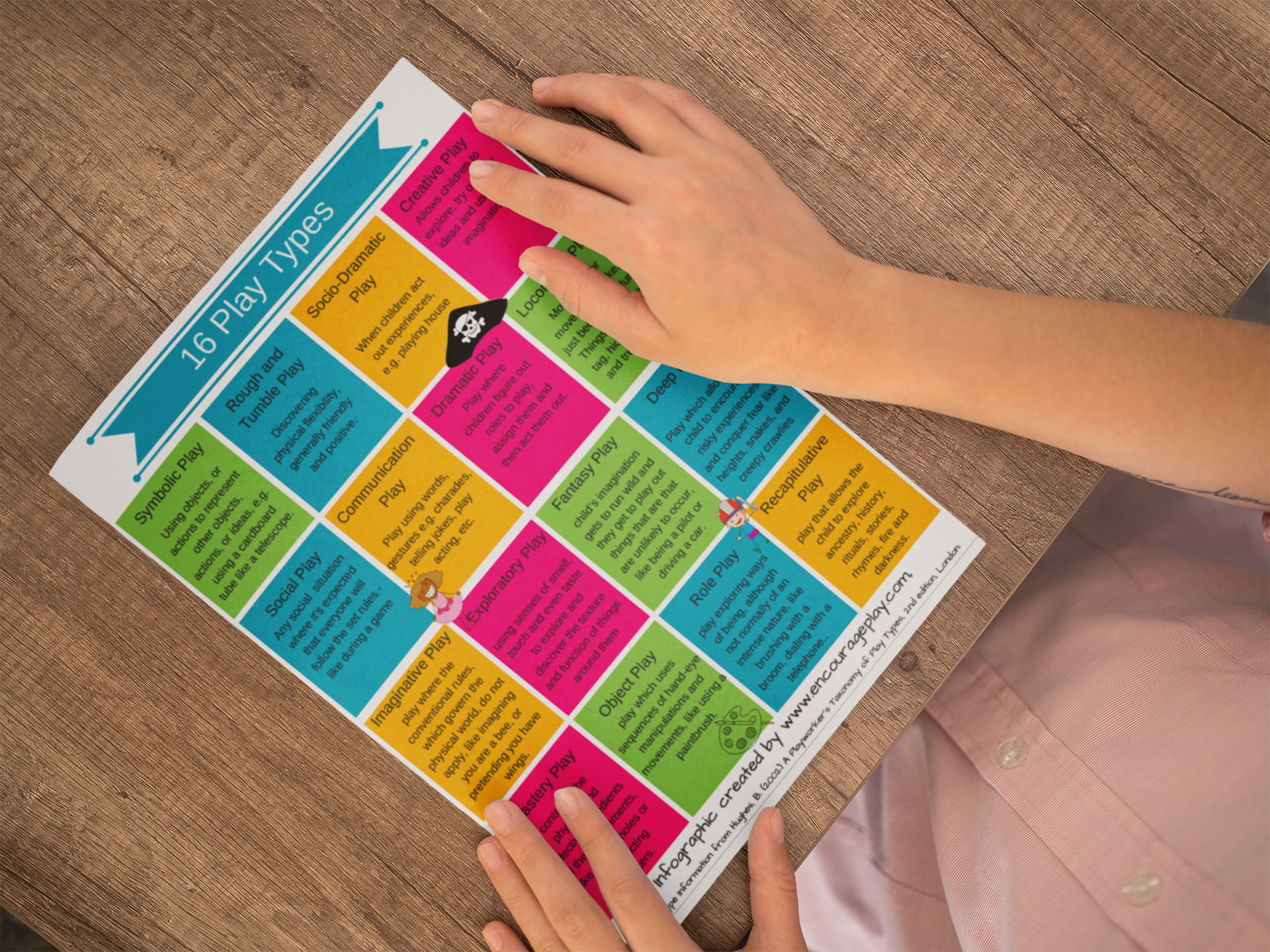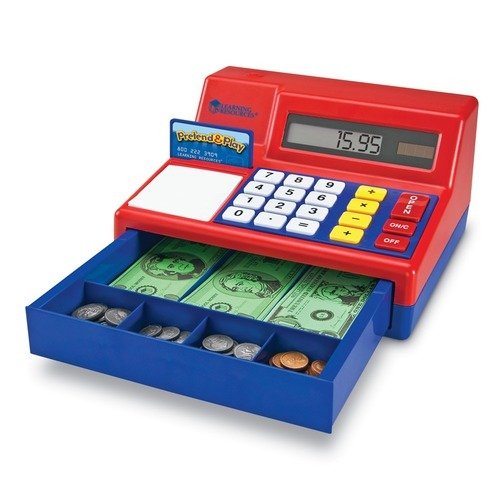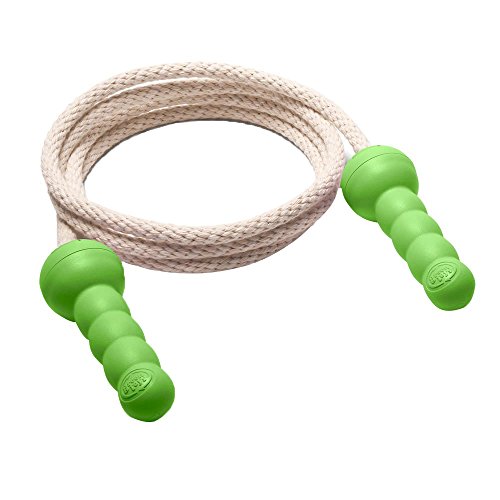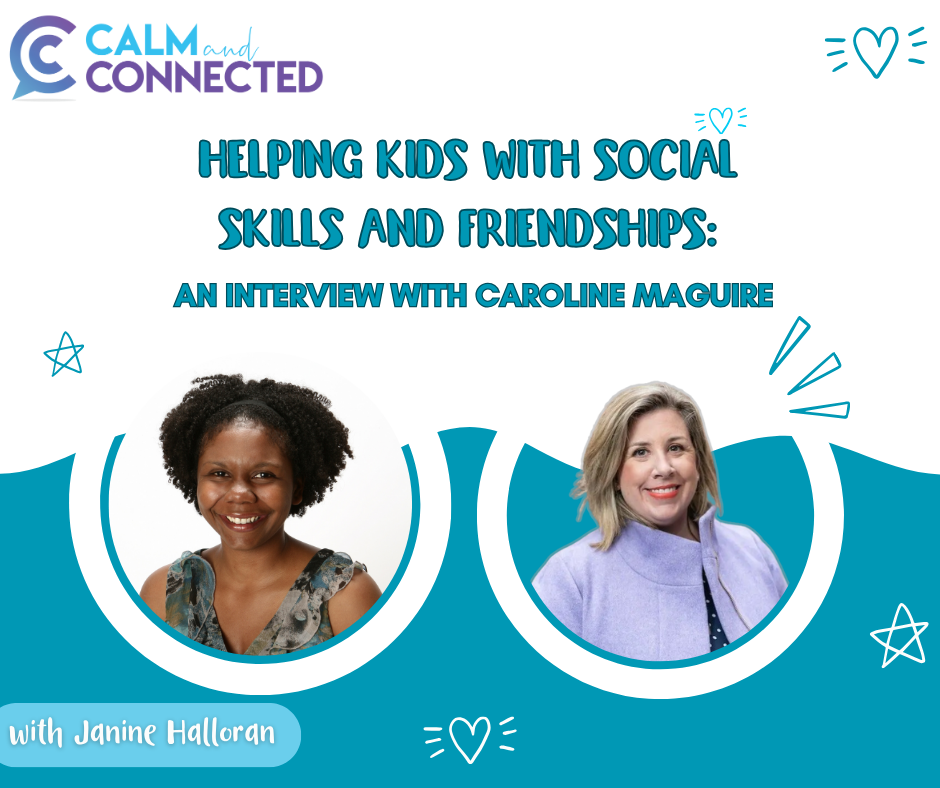Inside: Definition of 16 play types from Bob Hughes and ideas for play materials to encourage variety in the way children play.
This post contains affiliate links, learn more here
Definition of play:
“Engage in activity for enjoyment and recreation rather than a serious or practical purpose.”
Play means doing something for fun, rather than for practical reasons. The beauty of this definition is that there’s no one way to play. Play doesn’t mean just building with blocks or playing with cars. Play is versatile and can be different things to different people. For some people, it’s climbing rocks. For others still, it’s writing. For some, it’s reading a good book.
For example, I love playing board games, making crafts and completing puzzles. My daughter loves to create art. My son loves rough and tumble play.
In my research for Encourage Play, I came across a great resource from Bob Hughes that explains different types of play. Here’s a rundown of the 16 play types:
Symbolic Play
Using objects, actions or ideas to represent other objects, actions, or ideas, e.g., using a cardboard tube as a telescope.
Rough and Tumble Play
Close encounter play which is less to do with fighting and more to do with gauging relative strength. Discovering physical flexibility and the exhilaration of display and it’s friendly and positive. This type of play can burn up a lot of energy.
Socio-Dramatic Play
When children act out experiences, e.g., playing house, going to the shops or going to a restaurant.
Social Play
Any social or interactive situation where the expectation is that everyone will follow the set rules - like during a game or while making something together.
Creative Play
Allows children to explore, try out new ideas and use their imagination. They can use lots of different items, altering something and making something new.
Communication Play
Play using words, gestures, e.g., charades, telling jokes, play acting, etc.
Dramatic Play
Play where children figure out roles to play, assign them and then act them out.
Locomotor Play
Movement for movement’s sake, just because it’s fun. Things like chase, tag, hide and seek and tree climbing fall into this category.
Deep Play
Play which allows the child to encounter risky experiences and conquer fears, like heights, snakes, and creepy crawlies. Some find strength they never knew they had to climb obstacles, lift large objects, etc.
Exploratory Play
Using senses of smell, touch and even taste to explore and discover the texture and function of things around them. An example of this would be a baby mouthing an object.
Fantasy Play
This is the make-believe world of children. This type of play is where the child’s imagination gets to run wild, and they get to play out things that are that are unlikely to occur, like being a pilot or driving a car.
Imaginative Play
Play where the conventional rules, which govern the physical world, do not apply, like imagining you are a bee or pretending you have wings.
Mastery Play
Control of the physical and affective ingredients of the environments, like digging holes or constructing shelters.
Object Play
Play which uses sequences of hand-eye manipulations and movements, like using a paintbrush.
Role Play
Play exploring ways of being, although not normally of an intensely personal, social, domestic or interpersonal nature. For example brushing with a broom, dialing with a telephone.
Recapitulative Play
Play that allows the child to explore ancestry, history, rituals, stories, rhymes, fire and darkness.
Download the free 16 Play Types printable + 5 more free printables below:
These types of play aren’t hard and fast categories that never intersect. In fact, one playtime can include different play types. For example, playing pirates can include rough and tumble play, symbolic play, dramatic play, communication play, social play, fantasy play and imaginative play!
Encourage children to try different ways to play to see which they like.
The Social Skill Connection
Play is the best way for children to learn, including social skills. Children learn so many skills when they play, like:
listening & following directions
taking turns
making decisions
working together
flexible thinking
understanding someone else’s perspective
problem solving
executive functioning
communication skills
self-regulation
Here are some ideas to encourage play at home:
PUZZLES
DRESS-UP MATERIALS and PRETEND PLAY
PLAY-DOH
ARTS & CRAFTS MATERIALS
BOARD GAMES
CREATIVE COLORING
SENSORY PLAY
STORYTELLING
BUILDING TOYS
BIG BODY PLAY
What are your favorite playful materials for children? Please share below!
Source for 16 Play Types:
Hughes, B. (2002) A Playworker’s Taxonomy of Play Types, 2nd edition, London: PlayLink.





















































